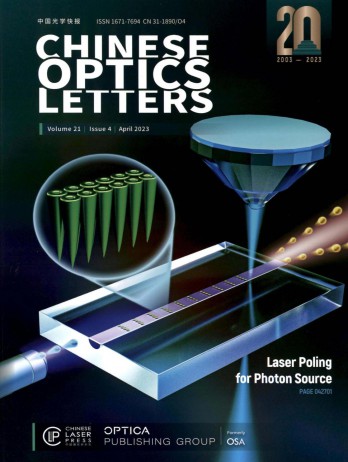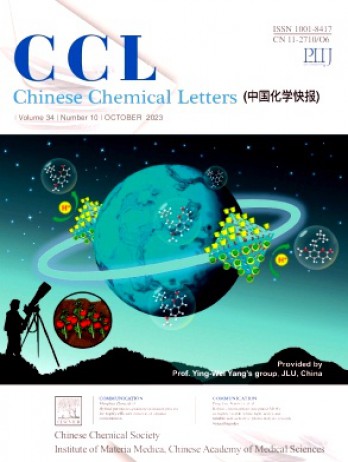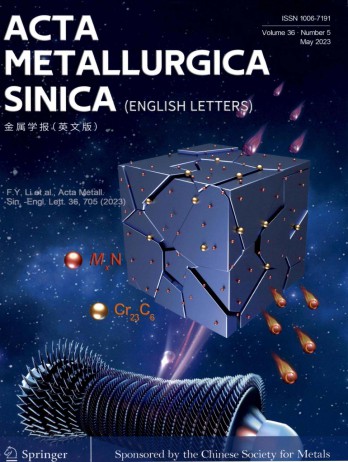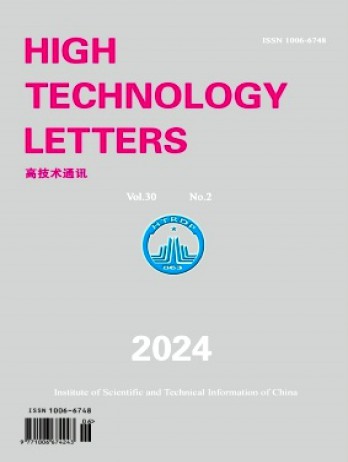《Chinese Optics Letters》雜志論文格式要求:
1. Title
The title should be concise but informative. Avoid beginning with an article or a preposition. The words "new" or "novel" should be avoided in the title and the text for legal reasons. Titles may be edited by the publisher to facilitate computer search.
2. Author names and Affiliations
Author names should be given in full and consistent form to facilitate indexing. Affiliations and postal addresses for all authors should appear on the title page.
3. Abstract
The abstract should be no longer than 100 words. It should be informative, without descriptive words or citations, and contain the major conclusions and quantitative results or other significant items in the paper. Together with the title, the abstract must be adequate as an index to all the subjects treated in the paper, and will be used as a base for indexing.
4. OCIS Codes
OCIS codes should be provided to help with indexing. This set of codes was formulated by the Optical Society of America and well-known in the optical research world. OCIS codes are available on Chinese Optics Letters’ web page and the OSA publication web pages. Each manuscript must be given 2-4 OCIS codes below the abstract, and the principal index code should be placed first.
5. Equations
Equations should be punctuated and aligned to bring out their structure, and numbered consecutively in round brackets on the right-hand side of the page.
Notation. Notation must be legible, clear, compact, and consistent with standard usage. In general, acronyms should be defined at first use.
Variables and Vectors. Set single-letter variables in italics (Eg. M). Set vectors in boldface (Eg. m). Functions, derivative "d," abbreviations, and multi-letter identifiers should be set in roman (plain) type (Eg. α, cos, ∫...dx).
Fences. For simple bracketing the usual order of parentheses and brackets is { [ ( { [ ( ) ] } ) ] }.
Bit and Byte. The standard abbreviations for bit and byte are b and B, respectively. To avoid confusion, these units should be spelled out in most cases (1 bit, 20 GB). Display equations should be broken and aligned for two-column display unless spanning across two columns is essential. Equations should be centered with equation numbers set flush right. For Math Type math, use the Format Equations feature to format all equations as Times + Symbol 10. Note: There must be a blank line space above and below each displayed equation.
6. References
References should be numbered consecutively in the order in which they are first referenced in the body of the manuscript. Two references [2,3] should be included together, separated by a comma, and three or more consecutive references should be indicated by the bounding numbers and an en dash [1-4]. When compiling your references, be sure to include the titles of articles. COL requires this information before a paper can be sent to peer review. The reference titles will subsequently be removed by copy editors before they are published, so this information is not included in the length estimate sent to authors when a positive decision is made by the editor. All reference authors should be included in the reference list but when reference authors are mentioned in the text, use surnames only (unless further clarity is needed), and use "et al." and first author name when three or more authors are given. The format of references is as follows:
Journal paper
1. Q. Ji, X. Ma, J. Sun, H. Zhang, and Y. Yao, "Novel method for measurement of effective cavity length of DBR fiber", Chin. Opt. Lett. 8, 398 (2010).
Book
2. N. Bloembergen, Nonlinear Optics (Springer, 1965).
Paper in published conference proceedings
3. R. E. Kalman, "Algebraic aspects of the generalized inverse of a rectangular matrix", in Proceedings of Advanced Seminar on Generalized Inverse and Applications 111 (1976).
SPIE proceedings
4. S. K. Griebel, M. Richardson, K. E. Devenport, and H. S. Hinton, "Experimental performance of an ATM-based buffered hyperplane CMOSSEED smart pixel array", Proc. SPIE 3005, 254 (1997).
Paper accepted for publication
5. H. Qi, M. Zhu, W. Zhang, K. Yi, H. He, and J. Shao, “Dependence of wavefront errors on the nonuniformity of thin film", Chin. Opt. Lett. (to be published).
Internet links
6. A. G. Ramm, H. Wang, and J. Ye, "Invisible obstacles", www.arxiv.org/abs/math-ph/0608034 (June 1, 2011).
Patent
7. K. Zhang, J. Zhang, R. Wang, R. Guo, J. Wang, and K. Peng, “All solid state single frequency and frequency-doubled laser” (in Chinese) Chinese Patent ZL98125474.8 (2000).
7. Figures and Tables
Figures should be suitable (resolution above 300 dpi) for immediate reproduction and embedded in the text. They should be set as one column wide (6-8 cm) if possible unless two-column display is essential. In the figures, the main lines should be about 0.3 mm in width, and the assistant lines 0.15 mm. Notations in the figures should be distinct and consistent with the same ones in the text, and their font size will be 7-9 pt. Figures should also be uploaded as separate figure files. Each figure should have its own caption. Color Art is Online Only, and free to authors.
Tables must be numbered in order of appearance and identified with appropriate titles. The table title, which should be brief, goes above the table. Note that tables are usually typeset, not scanned (tables cannot be electronically reduced in size). Tables should be set in one column wide if possible and be placed near their first mention in the body.
8. Article Length and Proof
Note that Chinese Optics Letters has a limit of five printed pages. If a paper exceeds this limit, it must be shortened before the paper is accepted. If the page proof is over the five-page limit, the proof must be shortened before the paper can be assigned to a final issue. Authors should use the COL Word or LaTeX templates to prepare manuscripts to facilitate length checking.
基本信息
《Chinese Optics Letters》雜志是由中國(guó)科學(xué)院主管,中國(guó)科學(xué)院上海光學(xué)精密機(jī)械研究所;中國(guó)光學(xué)學(xué)會(huì)主辦的國(guó)內(nèi)外公開發(fā)行的學(xué)術(shù)理論期刊,創(chuàng)刊于2003年,是國(guó)內(nèi)科學(xué)領(lǐng)域具有廣泛影響力的權(quán)威刊物。
該雜志國(guó)內(nèi)刊號(hào)為31-1890/O4,國(guó)際刊號(hào)為1671-7694,現(xiàn)被CSCD 中國(guó)科學(xué)引文數(shù)據(jù)庫(kù)來源期刊(含擴(kuò)展版)、統(tǒng)計(jì)源期刊(中國(guó)科技論文優(yōu)秀期刊)、知網(wǎng)收錄(中)、維普收錄(中)、萬(wàn)方收錄(中)、EI 工程索引(美)、CA 化學(xué)文摘(美)、SCI 科學(xué)引文索引(美)、國(guó)家圖書館館藏、上海圖書館館藏、文摘與引文數(shù)據(jù)庫(kù)等權(quán)威數(shù)據(jù)庫(kù)收錄。
此外,還榮獲多項(xiàng)榮譽(yù),如:中國(guó)優(yōu)秀期刊遴選數(shù)據(jù)庫(kù)、中國(guó)期刊全文數(shù)據(jù)庫(kù)(CJFD)、中國(guó)學(xué)術(shù)期刊(光盤版)全文收錄期刊、中國(guó)科技期刊優(yōu)秀期刊等,這些都體現(xiàn)了該雜志在推動(dòng)科學(xué)理論與實(shí)踐發(fā)展方面的重要貢獻(xiàn)。
欄目設(shè)置
《Chinese Optics Letters》雜志欄目涵蓋科學(xué)領(lǐng)域多個(gè)維度,包括:光纖光學(xué)與光通信、激光器與激光光學(xué)、材料、非線性光學(xué)、量子光學(xué)等。
作為一本具有較高學(xué)術(shù)水平和影響力的科學(xué)雜志,多年來一直致力于推動(dòng)科學(xué)領(lǐng)域的改革與發(fā)展,為科學(xué)工作者和研究者提供了一個(gè)交流和探索的平臺(tái),對(duì)促進(jìn)我國(guó)科學(xué)事業(yè)的發(fā)展起到了積極的作用。
《Chinese Optics Letters》雜志往年文章平均引文率
聲明:本信息依據(jù)互聯(lián)網(wǎng)公開資料整理,若存在錯(cuò)誤,請(qǐng)及時(shí)聯(lián)系我們及時(shí)更正。



